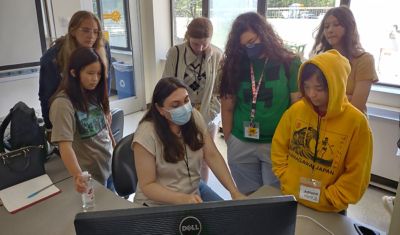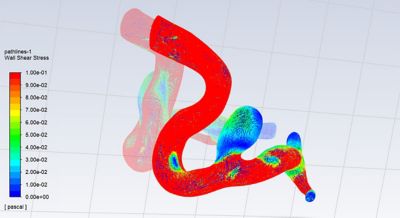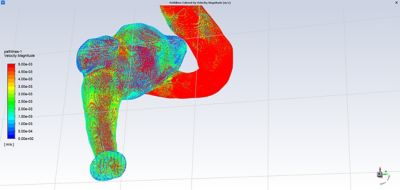-
United States -
United Kingdom -
India -
France -
Deutschland -
Italia -
日本 -
대한민국 -
中国 -
台灣
-
Ansys stellt Studierenden auf dem Weg zum Erfolg die Simulationssoftware kostenlos zur Verfügung.
-
Ansys stellt Studierenden auf dem Weg zum Erfolg die Simulationssoftware kostenlos zur Verfügung.
-
Ansys stellt Studierenden auf dem Weg zum Erfolg die Simulationssoftware kostenlos zur Verfügung.
-
Kontakt -
Karriere -
Studierende und Akademiker*innen -
Für die Vereinigten Staaten und Kanada
+1 844,462 6797
ANSYS BLOG
January 24, 2023
Female High School Students Embark on Engineering Quests at the University of Wisconsin-Milwaukee
According to the most recent Science and Engineering Indicators report, prepared under the guidance of the National Science Board, women represented about 34% of all science, technology, engineering, and mathematics (STEM) workers in the United States in 2019.1
As the gender ratio in STEM has remained imbalanced for years, the University of Wisconsin-Milwaukee (UWM) is one of many academic institutions implementing female-focused programs in STEM subjects.
For the last decade, UWM has hosted a summer program for female high school students to tackle real-world engineering projects through hands-on learning. The EnQuest program — its name a derivation of “engineering quest” — offers two sessions each summer. Since its inception, hundreds of students have participated, and reports show that an impressive 75% of EnQuest alumnae are currently pursuing engineering careers.
To keep the momentum, last summer EnQuest integrated simulation through the Ansys Academic Program to enable students to explore real-life patient case studies involving artery blood flow and aneurysms using Ansys Fluent computational fluid dynamics (CFD) software.

Mahsa Dabagh, an assistant professor of biomedical engineering at the University of Wisconsin-Milwaukee, is pictured instructing students in the EnQuest program this past summer.
The Quest for Female Engineers
EnQuest began in 2011, when UWM’s College of Engineering and Applied Science received a National Science Foundation grant to recruit and retain engineering and computer science students. A graduate student suggested using the grant to develop a program for high school girls. With the help of Christine Beimborn, now the College of Engineering and Applied Science’s STEM-outreach manager, UWM created EnQuest, and Beimborn remains the program’s main coordinator today.
EnQuest offers two week-long sessions of day and overnight camps in June and July, respectively. The program is open to female students exiting ninth, tenth, or eleventh grade.
Though some engineering fields have better female representation than others, Beimborn says women are generally still underrepresented in engineering, so awareness is key.
“As it is with many universities, we see that women in engineering and computer science really excel, but they don’t always know that this is a field that they want to pursue,” she says. “So, we focus on showing girls and young women that there are ways that engineering can connect to their interests and that it’s a much broader field than they might think it is.”
As mentioned above, a recent survey of past program participants reported that 75% of EnQuest alumnae are pursuing engineering careers. To continue the program’s impact, last year EnQuest welcomed Mahsa Dabagh, an assistant professor of biomedical engineering at UWM whose research includes cancer and vascular diseases.
Dabagh led one of the 2022 program sessions and invited students to assist her with an actual research project.
“One thing that we’ve learned really gets young women engaged is knowing that their project is going to help someone in the real world,” says Beimborn. “It’s not just hypothetical; it’s going to make a real-world impact.”
Simulation Integration
In Dabagh’s session, a group of six students helped her analyze patient case studies concerning artery blood flow and aneurysm detection. Dabagh selected Fluent to illustrate the concepts most accurately and in a more engaging way than static figures or descriptions.
“We have patient-specific images, so Ansys Fluent helps make it more interesting and relatable,” she says. “The students were able to model the flow and work with blood pressure changes and different flow parameters to see how those variables impact the outcome.”

Students used Ansys Fluent to simulate the wall shear stress of an aneurysm within an artery.
Using the images, Dabagh and the team built 3D geometries of large cerebral vascular arteries, most of which contain aneurysms. With Fluent, the team examined correlations between blood distribution inside aneurysms and regions of aneurysms that are more prone to rupture. For example, if high blood pressure indicated hypertension, students zeroed in on this area with simulation to see inside the aneurysms and understand how to detect and prevent possible blockages and ruptures.
Three camp counselors assisted Dabagh, including two biomedical engineering students and one computer science graduate student. The group worked on the project Monday through Thursday, delivering a final presentation on Friday.
“It was really difficult for the students to get their heads around how a liquid behaves going through a blood vessel that has a stretchy part, which would be the aneurysm,” says Beimborn. “Ansys simulation models helped them see invisible things by using lines and colors to show pressure and the wall shear. It really helped them understand what was going on when those invisible things were made visible.”

This Ansys Fluent simulation illustrates the velocity magnitude of an aneurysm in an artery.
Robust visualization is just one of the reasons Dabagh selected Ansys simulation for the project.
“Ansys is more user-friendly and accurate than other software, and it provides more options like post-processing visualization,” says Dabagh. “I wanted students to learn as much as possible and not struggle with learning how to choose boundary conditions or how to post-process, and Ansys is easier to follow for students with user-friendly interfaces and trustable results. It has high reliability and is easy to import different files. These are all features that Ansys has that are quite unique.”
Beimborn and Dabagh agree that introducing students to simulation — an addition made possible through the Ansys Academic Program, which provides universities with deeply discounted software for use in the classroom or in research — is a valuable component to the EnQuest experience.
“Simulation is a real thing that engineers use in their professions, so giving the students exposure to a real work skill and the kinds of tasks that professional engineers do is really helpful,” Beimborn adds.
In addition to a week-long project, students are introduced to career engineers at off-site networking events and brought to visit nearby labs, including UWM’s Connected Systems Institute (CSI), a 10,000-square-foot lab on campus. CSI supports the development of advanced manufacturing processes and houses a fully functional manufacturing cell that utilizes advanced systems, including simulation, digital twin technology, and the use of artificial intelligence for quality and performance tracking.

The Connected Systems Institute (CSI) is a 10,000-square-foot lab at the University of Wisconsin-Milwaukee that is dedicated to industrial internet of things (IIoT) manufacturing principles.
Application in the Real World
For most students in Dabagh’s group, the subject matter particularly resonated because they have loved ones with vascular diseases. With personal interest in the research, students engaged even more deeply and wanted to see firsthand how simulation can help medical professionals detect and prevent life-altering conditions.
“I like that the students worked with what Dr. Dabagh uses in her research. It wasn’t some kid version of it; it was the actual methods that one of our research faculty is using that will, one of these days, be published to help people in the medical profession help patients — very real-world,” says Beimborn.
EnQuest aims to provide students with practical skills that they can apply in the future, whether in academia or industry.
“Ansys Fluent is something you can’t limit; you can apply it to many fields,” says Dabagh. “Fluent is not limited to blood flow. It could be any fluid. It could be any geometry. And that’s a powerful point because it can be applied in other disciplines that students may choose to pursue, like mechanical or civil engineering.”
Beimborn led EnQuest’s other session last summer in collaboration with Engineers Without Borders to engage students in the development of renewable energy resources to support an area in Guatemala. Students were equipped with a tool kit of parts that was fabricated locally in southeast Wisconsin. In a past project, students made solar reading lamps so Guatemalan children could do homework at night, as many households lack electricity.
What’s in store for EnQuest in 2023? Beimborn says brainstorming is underway now. To stay informed about the program’s latest camps, complete an interest form at the EnQuest site.
To learn more about the Ansys Academic Program, click here for more information and incentives, including free software downloads and learning resources.










